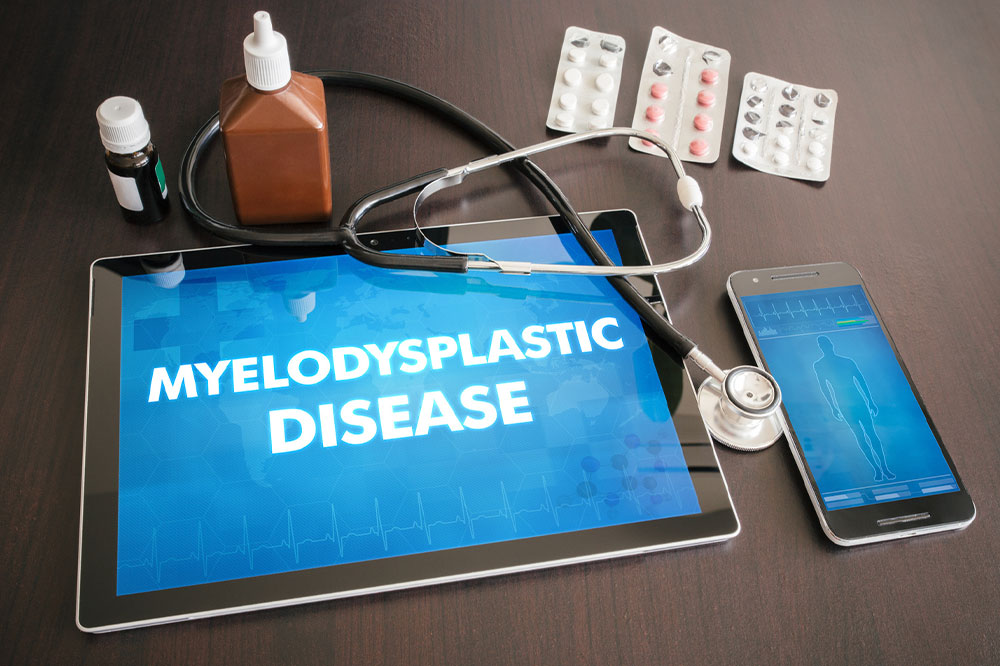
Myelodysplastic syndromes – Symptoms, causes, and management
Myelodysplastic syndromes are a group of conditions characterized by poorly formed blood cells in the bone marrow. This can lead to a lack of one or more types of blood cells, making the group of disorders a form of cancer. Generally, the treatment here focuses on the management of the symptoms and prevention of further complications while helping slow down the disease progression. Here is all one should know about myelodysplastic syndromes:
Symptoms
As myelodysplastic syndromes (MDS) can lead to an inadequate number of healthy blood cells, one may experience the following symptoms:
- Fatigue
- Anemia (low red blood cell count)
- Unusual paleness (usually brought on by anemia)
- Easy bruising
- Frequent infections
- Tiny, red spots on the skin
While one should keep an eye out for these symptoms, the condition may not cause any symptoms in the initial stages. As the illness progresses, the signs can become easier to recognize. However, one should consult a doctor if they notice any such signs to seek a timely diagnosis and appropriate treatment.
Causes and risk factors
While a few cases of MDS have been linked to specific risk factors, the precise causes remain unknown. Nevertheless, here are some of the most common factors that increase the risk of developing MDS:
Aging: This is one of the most important risk factors for such disorders. MDS is common among those over 60, and those between 70 and 80 years of age are at a higher risk of developing myelodysplastic syndromes.
Sex: Men are more likely to develop such disorders compared to women. Although the reason is not yet known, this development has been associated with increased exposure to certain chemicals, such as benzene, in the workplace environment.
Exposure to radiation or chemotherapy: Having undergone cancer treatments like radiation or chemotherapy can increase the risk of developing MDS. But the complications do not stop there; the risk of developing the condition is also influenced by the type of cancer. A combination of chemotherapy and high-dose radiation can further increase the chances of developing MDS.
Genetic factors: One may be at a higher risk of developing MDS if they have inherited certain syndromes caused by mutated genes. These abnormal genes can be inherited from one or both parents. Some examples of such inherited syndromes are Fanconi anemia, severe congenital neutropenia, and familial platelet disorder.
Diagnosis
After seeking a detailed analysis of a patient’s medical history, healthcare professionals can suggest certain tests and physical exams to diagnose myelodysplastic syndromes. Common diagnostic methods include blood tests and biopsies intended to remove and examine a specified amount of liquid bone marrow with a small piece of bone. Following the procedure, samples will be sent to laboratories for analysis to help understand the type of condition and the severity of symptoms. Based on the results, the doctor will come up with a treatment plan and discuss the prognosis with the patient.
Treatment
There is no permanent cure for MDS, so most treatment options suggested by healthcare professionals aim to slow the development of the disease, ease its symptoms, and prevent further complications. Some of the common treatment options are:
Blood transfusions: Many people with MDS have insufficient blood cells and develop symptoms due to this shortage. So, to ensure better management of these symptoms, one can undergo a blood transfusion. Here, healthy blood cells of donors are used to replace platelets and red blood cells, helping control the symptoms.
Bone marrow transplants: Also called stem cell transplants, this treatment is one of the most common options for dealing with MDS and its symptoms. During a bone marrow transplant, one can be exposed to a high dosage of chemotherapy to eliminate the defective blood cells in the bone marrow. Following this, the abnormal cells are replaced with healthy stem cells (that were donated) to improve bodily functions and help manage the condition.
But, before choosing the most suitable treatment option, one must understand the benefits, risks, and potential complications. It is important to opt for the procedure that aligns with individual preferences and overall health. So, discussing the course of treatment with a doctor can help one make an informed decision. In addition to the abovementioned mentioned treatment alternatives, one must try to avoid contracting serious infections when dealing with MDS. So, one should adopt healthy habits like regularly and thoroughly washing hands, eating clean and fully cooked peeled fruits and vegetables, and avoiding physical contact with sick family members, friends, and colleagues. Additionally, one must keep an eye out for common signs of MDS to receive an early diagnosis and treatment.




